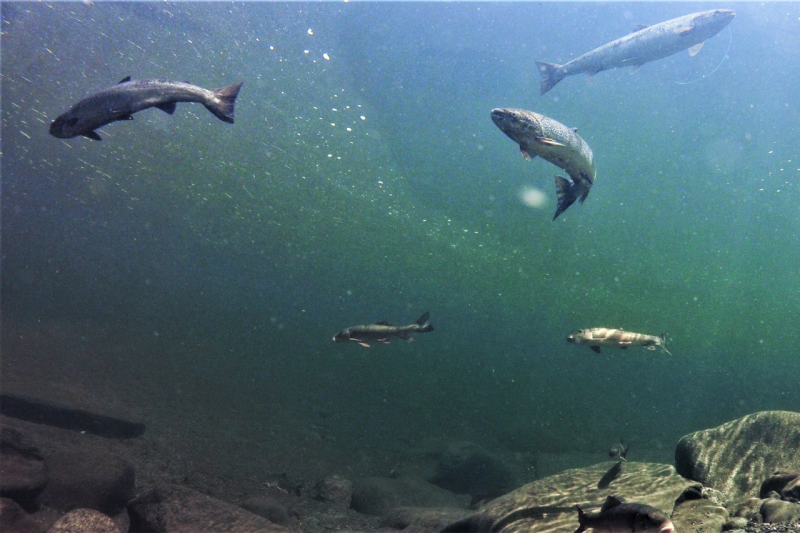We highlight examples of the "ripple effects" and benefits of Atlantic Salmon conservation for the environment and community.
The Ripple Effects of Atlantic Salmon Conservation
March 26, 2020
For the past 20 years, Atlantic salmon have been protected in Maine. Although the population is still critically endangered, science and management efforts to support salmon recovery have also benefited the entire ecosystem and local community.
 Maine Department of Marine Resources, Casey Clark
Maine Department of Marine Resources, Casey Clark
More Information
Last updated by Northeast Fisheries Science Center on October 13, 2023



